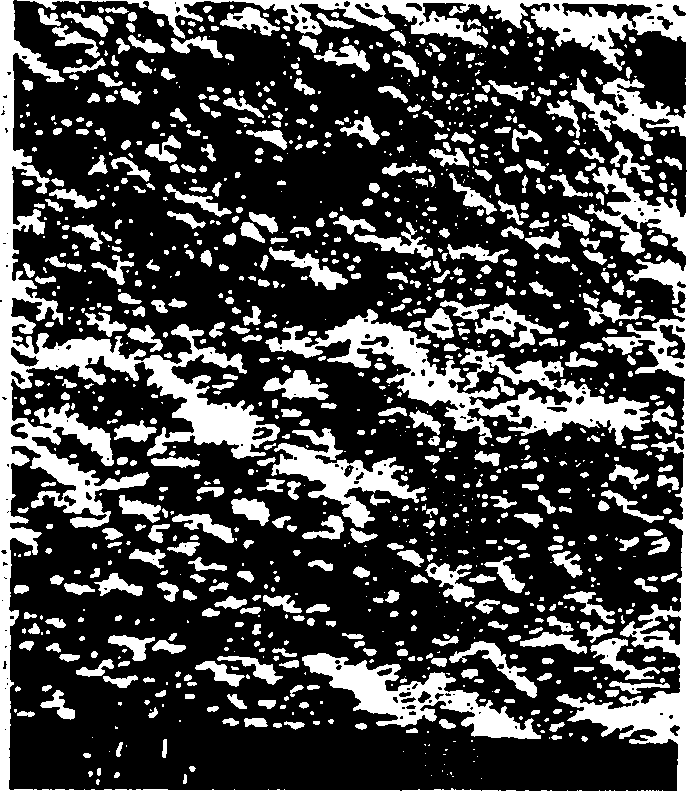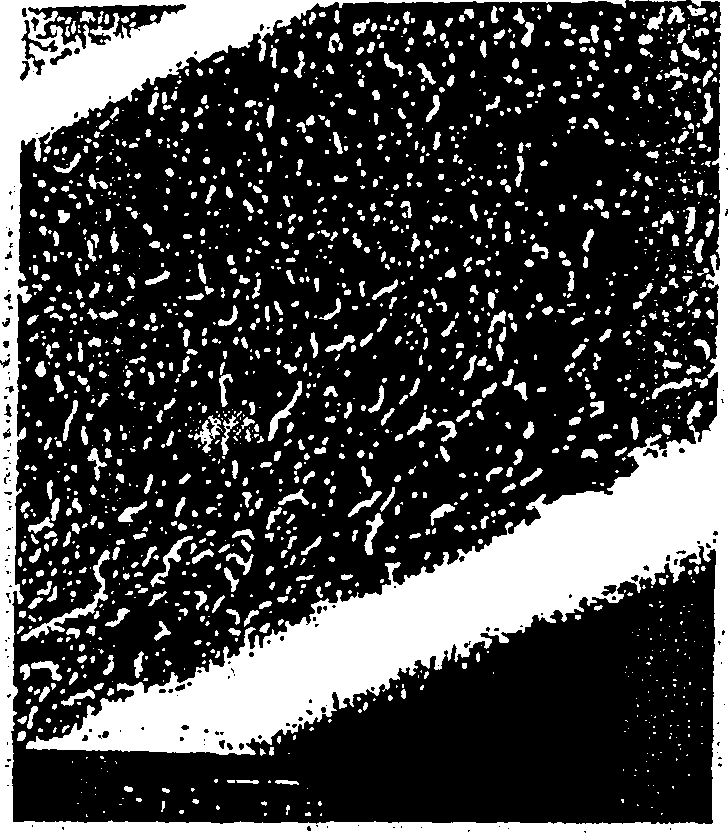Blend membranes based on sulfonated poly (phenylene ether) for enbanced polymer electrochemical cells
A technology of polymer film and polyphenylene ether, which is applied in the field of solid polymer electrolyte fuel cells, zinc halide batteries, ion exchange membranes, and electrolyte double-layer capacitors, can solve the scientific method of electrochemical cells without predictable blend polymer films And other issues
- Summary
- Abstract
- Description
- Claims
- Application Information
AI Technical Summary
Problems solved by technology
Method used
Image
Examples
Embodiment 1
[0061] Li at room temperature + Type light yellow sulfonated PPO polymer (Mw = 50,000) was immersed in 1N HCl solution for several hours. This step uses H + Exchange SO 3 - Li in the group + . The polymer was then carefully washed in deionized water to rinse excess acid. will wet H + Type sulfonated PPO was placed in a vacuum oven at 40°C for 24 hours. The sulfonated PPO was then dissolved in dimethylformamide (DMF) to form a 20% by weight solution. Separately prepare polyvinylidene fluoride PVF 2 (Mw=60,000) 20% by weight solution in DMF. Then 2.55 g of sulfonated PPO-DMF solution and 0.45 g of PVF 2 - The DMF solution was mixed for 1 hour at room temperature for blending. The blend of sulfonated PPO:PVF 2The weight ratio is 85:15. The blend solution was poured onto a clean glass plate surface and cast with a spatula. The glass plate was then placed in a chamber with a flow of dry air for 48 hours to evaporate most of the DMF. The final film was a dry, transluce...
Embodiment 2
[0063] Respectively, 20% (weight) of Li + Type sulfonated PPO polymer (Mw=50,000) was dissolved in DMF, and 20% (weight) of PVF 2 (Mw=60,000) was dissolved in DMF. Then, with sulfonated PPO and PVF 2 The two solutions were mixed in a weight ratio of 80:20. The resulting mixed solution was stirred at room temperature for 1 hour. The blend solution was poured onto a clean glass plate surface and cast with a spatula. The casting solution was then placed in a chamber under a flow of dry air for 48 hours. After the membrane was dried, it was placed in 0.5N HCl solution to exchange Li + to convert to the proton form. The thickness of the cast film was 55 µm, and the electric conductivity at 45° C. in a wet state was 0.22 S / cm. The film is suitable for electrolytic double layer capacitors and rechargeable zinc halide batteries.
Embodiment 3
[0065] 25% by weight of Li + A type sulfonated PPO polymer (Mw=50,000) was dissolved in isopropanol. No second polymer was added. The above solution was cast on the surface of a clean glass plate with a spatula to form a sulfonated PPO film. The film was dried under a dry air atmosphere for 48 hours and then placed in an oven at 70°C for 24 hours. The sulfonated membrane is transparent with a light yellow-brown color. The film thickness is 120 micrometers. Then, the membrane was placed in 0.1N HCl solution for 1 hour. The ICD of the film was measured to be 3.0 meq / g. The swelling ratio of the film in water was 25% at 30°C and 31% at 80°C. The conductivity of the film at 45°C was 0.016 S / cm.
PUM
| Property | Measurement | Unit |
|---|---|---|
| Thickness | aaaaa | aaaaa |
| Conductivity | aaaaa | aaaaa |
| Conductivity | aaaaa | aaaaa |
Abstract
Description
Claims
Application Information
 Login to View More
Login to View More - R&D
- Intellectual Property
- Life Sciences
- Materials
- Tech Scout
- Unparalleled Data Quality
- Higher Quality Content
- 60% Fewer Hallucinations
Browse by: Latest US Patents, China's latest patents, Technical Efficacy Thesaurus, Application Domain, Technology Topic, Popular Technical Reports.
© 2025 PatSnap. All rights reserved.Legal|Privacy policy|Modern Slavery Act Transparency Statement|Sitemap|About US| Contact US: help@patsnap.com



